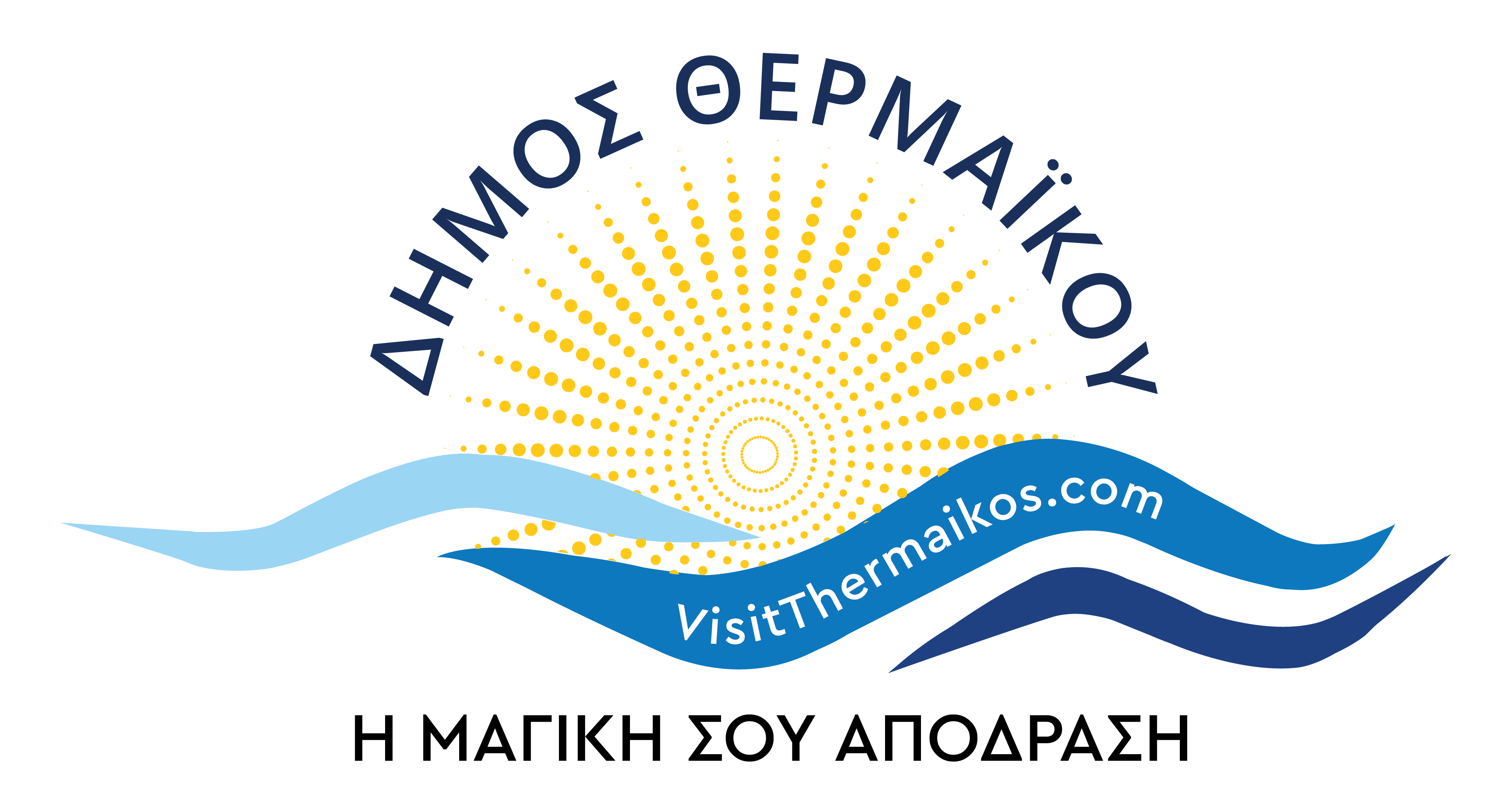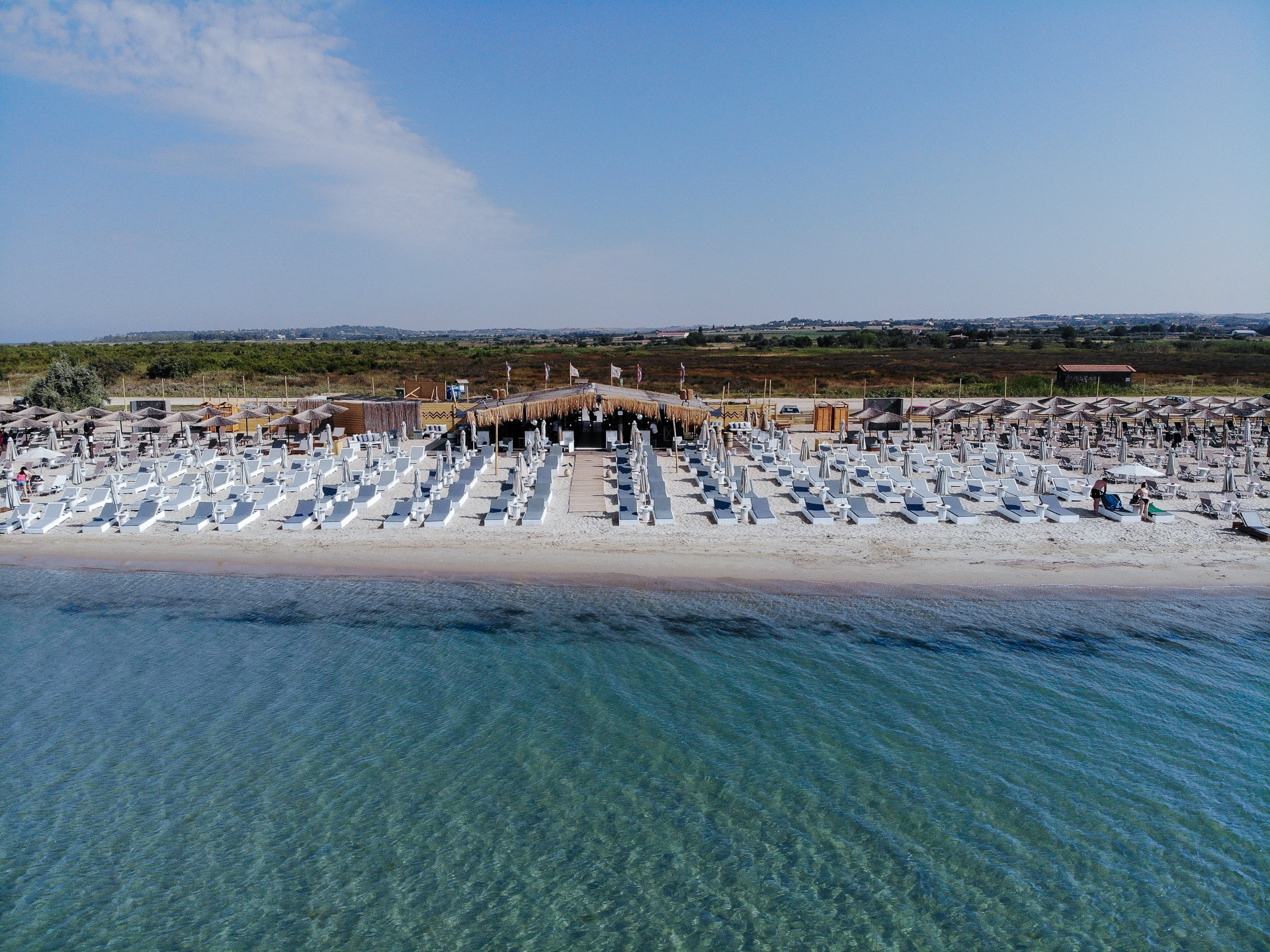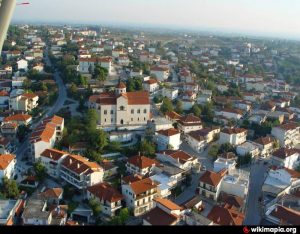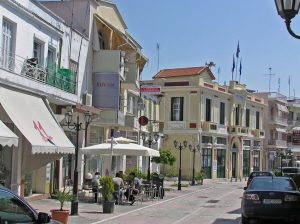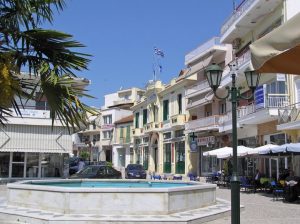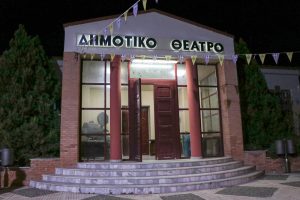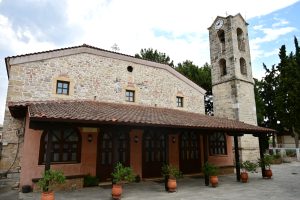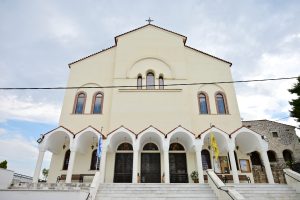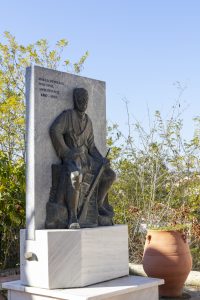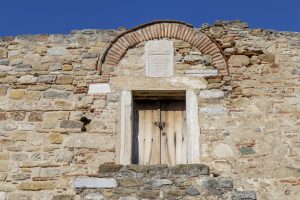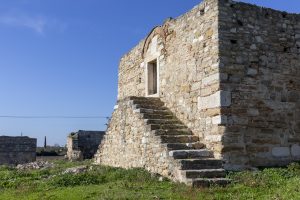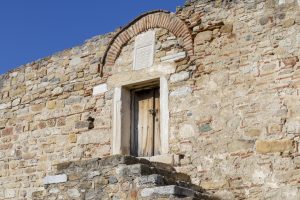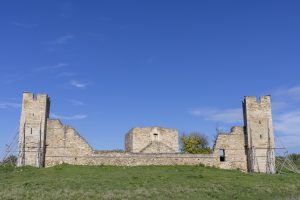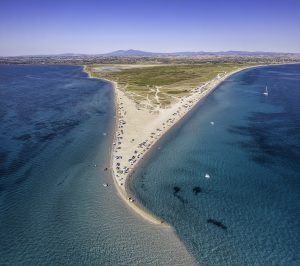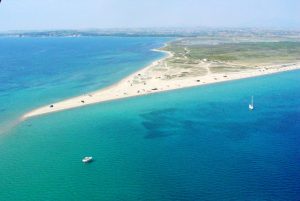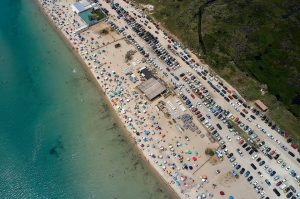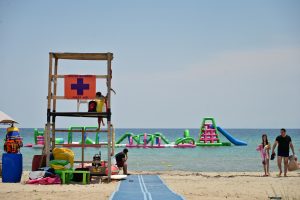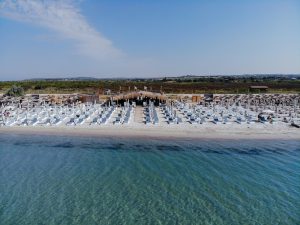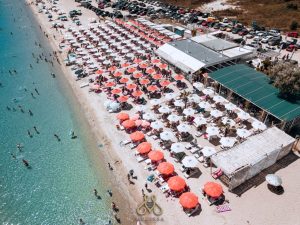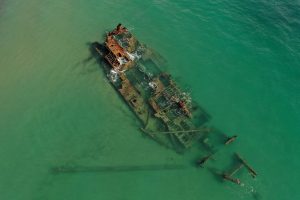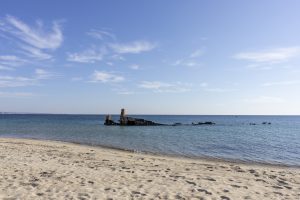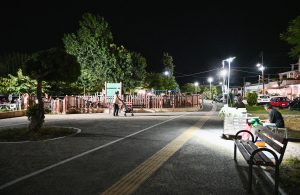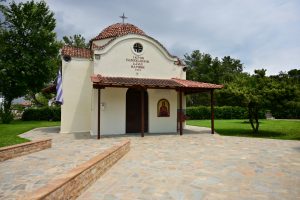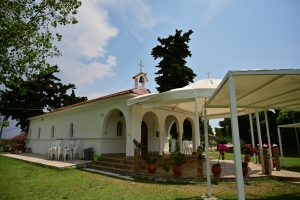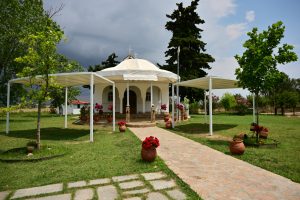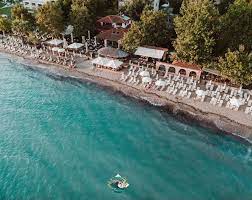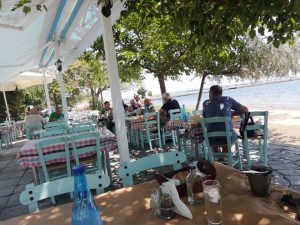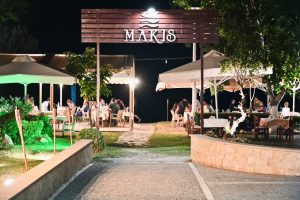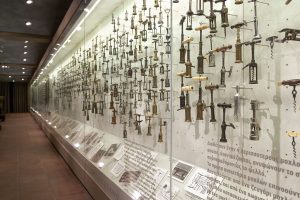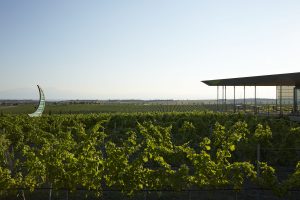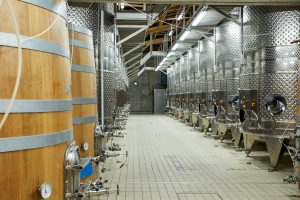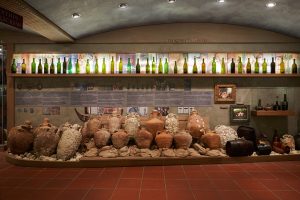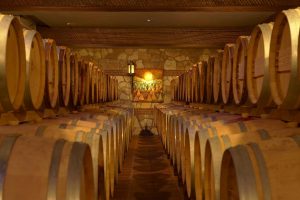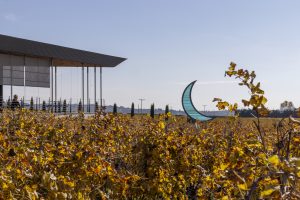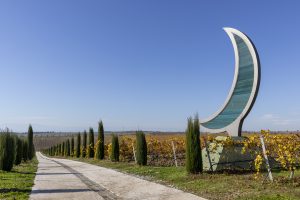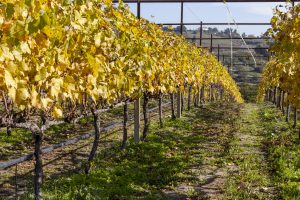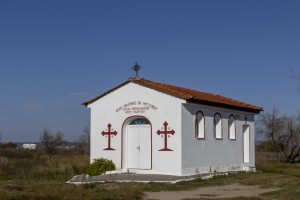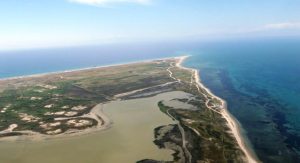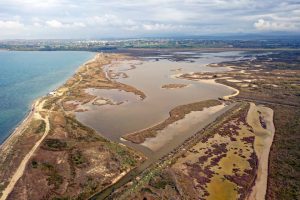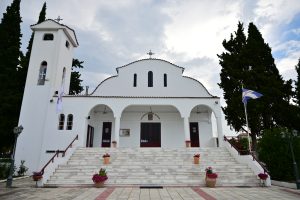Epanomi is located at the southern end of the Municipality of Thermaikos, defining its administrative boundaries towards the neighboring prefecture of Halkidiki. It has an area of 91,541 acres and the extent of its coasts reaches 40 kilometers, while its cape forms the geographical boundary of the Thermaikos gulf.
BRIEF HISTORY
The beginning of the history of Epanomi is very old as it is one of the oldest settlements in the area and was inhabited since the Neolithic years. It is referred to by Homer as “Gigonis Akra” and has been continuously inhabited since the Neolithic years. It was one of the most important villages both during the Byzantine years and during the period of the Turkish occupation. The vast majority of its inhabitants are indigenous.
In the area of Epanomi, many archaeological finds have been found that refer mainly to the early Christian and early Christian years. One of the most important archaeological sites is the cemetery at Limori, located northwest of Epanomi. It is an organized early Christian burial site which was in use throughout the 4th and the first half of the 5th century AD. century.
Throughout the Ottoman rule, Epanomi belonged administratively to the Nahiiye of Kalamaria and fiscally to the Hasi of Logos. In the revolution of 1821, the Epanomites actively participated with many fighters, such as Georgios Ioannou, who was a representative of Halkidiki in the 1st National Assembly of the Eastern Heron of Greece, Christodoulos Theodorou (born 1796), Vasilios Antoniou (born 1790), Triantafyllos Kostas (b. 1793) and Aggelis Lambrou (1796-1864). The Community of Epanomi was founded in 1918 and as the capital village of the region it had under its administration all the surrounding refugee settlements that were created later and make up the current Communities of the modern Municipality of Thermaikos.
INTEREST TO THE VISITOR
The natural beauty of Epanomi offers surprises to every type of visitor. From the archaeological findings, from all historical periods, the wetland included in the NATURA network, to the clear blue waters on the kilometers of beaches of incomparable beauty.
Points of archaeological interest
The archaeological dig brought to light 42 tombs of various categories, in and around which were found several utensils, vases, jewelry, but also coins dating from the end of the 2nd to the beginning of the 5th century. To the east of the cemetery in Limori, at the location of Byadoudi, the ruins of a three-aisled early Christian basilica were discovered. The temple had rich sculptural architectural decoration, with colorful marbles and mosaics with gold and silver leaves.
Three kilometers south of Epanomi are Kritziana, one of the four large shares of the Monastery of Agia Anastasia. The village is mentioned for the first time in a document of the Monastery of Agia Lavra in 1110. Unfortunately, there is no recorded information about the local population or the area of Kritjiani. What is certain is that in 1530, Kritziana was already under the Metohi of Agia Anastasia.
Over the years, the village of Kritziana disappeared, without its exact location being identified, which is most likely located in the current share of Agia Anastasia. The metochi is built in a fortified manner, as at the time it was built, pirate raids were a frequent phenomenon in the area.
Beaches
The beach of Potamos is an endless oasis of sand, combined with the Shipwreck and a headland gives the beach the special characteristic of “two faces”: On one side there is a wave while on the other there is calmness. The beach is very popular especially in recent years. The close distance from Thessaloniki, the diversity of the beach and the beauty of the Shipwreck, a ship that participated in works for the beach in the area but sank around 1967-70, make it perhaps the most popular beach near Thessaloniki. Beach bars and taverns operate in the area, which attract thousands of people during the summer season.
Paliouras Beach and Ormos (beach) Epanomi are also excellent beaches, where one can enjoy swimming in combination with a drink or a tsipouro in the shops operating in the area. In the area of Ormos Epanomi are the picturesque churches of Agia Marina and the Transfiguration of Sotiros. During their celebration small trade fairs are organized in the beach area.
Vineyards – Gerovasiliou Estate
Business website here.
On the slopes of Epanomi, a few kilometers outside of Thessaloniki, the well-kept vineyard surrounds the modern winery, where the well-known wines of the Gerovasiliou Estate are produced. The Gerovasiliou Estate has been active in the field of vines and wine since 1981. At the Gerovasiliou Estate, the cultivation of the vineyard is done with special care and continuous experimentation in the study of Greek and international known and unknown varieties. The evolution of technology goes hand in hand with tradition throughout the viticulture and winemaking. The goal is to produce quality wines from the privately owned vineyard with the typical characteristics of the microclimate (terroir) of the area. The estate’s wines have already distinguished themselves for decades in various international competitions, gaining worldwide acclaim and recognition.
The famous Gerovasiliou Wine Museum operates within the Estate, where the visitor can admire the rich collections of viticulture, winemaking, bottling and barrelmaking tools from all over the world.
The Gerovasiliou Estate can be visited by wine lovers and all those who want to get to know the world of vines and wine up close. The visitor can choose the labels to try from the Estate’s wine list or one of the specially designed wine suggestions. Current and rare vintages, matching raw materials, flavor combinations, and the view of the imposing vineyard perfectly complete the visit to the Gerovasiliou Estate.
Natural environment
Epanomi is an area of high ecological importance since the wetland that exists in the “Fanari” area, an area of 5,500 acres, functions as a refuge for migratory birds and other game and is rich in flora and fauna. The Epanomi wetland is included in the “Natura 2000” program of the European Union.
The Lagoon of Epanomi is located at Cape Mytikas, 5km southwest of Epanomi, with a total area of 830.38 hectares.
In the Epanomi Lagoon, over 186 species of birds breed, feed and hibernate in the lagoon.
The total number of species and individuals of birds during the year is very large and sometimes extremely rare species of birds appear. A typical example was the appearance of the seagull, a globally threatened species, in June 2009. A total of 217 bird species have been observed. 135 of them respond during migration, 38 nest in the area while 67 species overwinter. Of these, 3 species are globally threatened, 54 are listed in the red book of Endangered Vertebrates of Greece and 67 are included in annex 1 of the Community Directives for birds.
Saint Neomartyr Argyrios the Epanomite
Saint Neomartys Argyrios also comes from Epanomi, who was born in Epanomi in 1788 and was martyred in Thessaloniki in 1806 at the age of 18. His memory is commemorated on May 11, when the church of the same name, located in the city of Epanomi, celebrates. As part of the celebration of Agios Argyrios, a festival is also organized in the area of the New Park of Epanomi.


